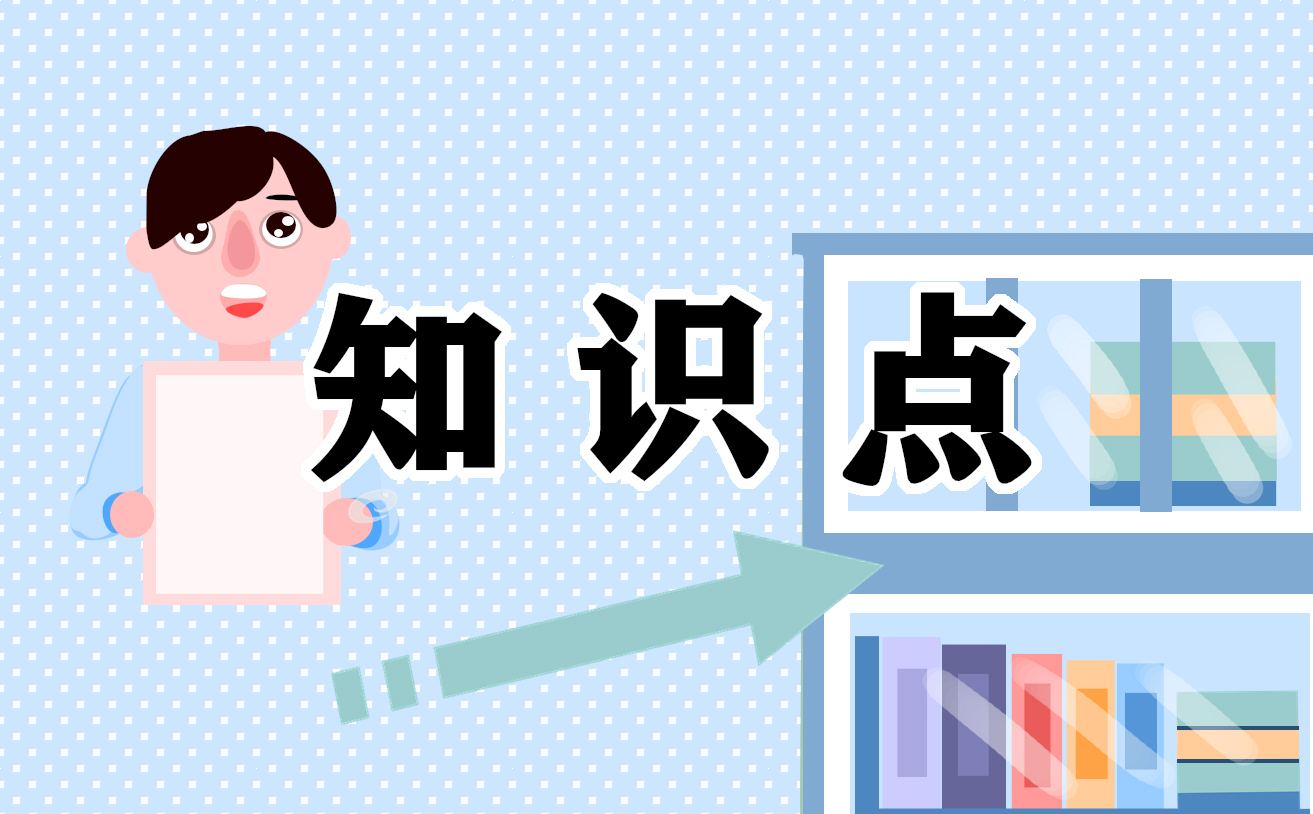你知道in的用法吗?快来一起学习吧,下面小编就和大家分享,来欣赏一下吧。
介词 in 的用法总结
1. 表示时间,表示“在……后”,注意它与after的区别:虽然两者均可与一段时间连用,表示多久之后,但in 以现在时间为起点,表示从现在起多久以后,通常用于将来时态或含有将来意味的句子;而 after 则以过去或将来时间为起点,表示从那以后。
如:
I’ll come back in five minutes.
我5分钟后就回来。(以现在时间为起点)
He came back after five minutes.
5分钟后他就回来了。(以过去时间为起点)
但是,若after后接的不是一“段”时间,而是一“点”时间,则完全可以现在时间为起点。
如:
I’ll come back after five o’clock.
我5点钟以后回来。
不过,在现代英语中,以上规则有时被打破。
如:
I may come after a day or two.
我可能过一两天会来。
Wang Bing is leaving the USA after two days.
两天后王兵要离开美国。
2. 类似in three days 这样的短语,有时含义不易确定,因为它既可表示“3天内”,也可表示“3天后”,大致可以这样区分:若与延续性动词连用,则表示“3天内”,若与非延续性动词连用,则表示“3天后”。
如:
He learnt English in three weeks.
他在3周内学会了英语。
The train will arrive in a few minutes.
火车过几分钟就到。
但语言的实际并不完全是这样,有时需视具体的上下文或语境来确定。
如:
We should be able to complete the work in five days.
我们应该能在5天内完成这工作。
为了明确语义,有时人们就分别用 within 和 after 来表示“在……内”和“在……后”:
I’ll see you again within three days.
3天内我再来看你。
I’ll see you again after three days.
3天后我再来看你。
3. 表地点、位置、范围、空间等,注意不要混淆in与on的用法。
如:
瞧,墙上有个洞。
误:Look, there’s a hole on the wall.
正:Look, there’s a hole in the wall.
比较:a picture on the wall 墙上的画。
我在报纸上看到这条消息。
误:I read about it on the newspaper.
正:I read about it in the newspaper.
比较:a photo on the newspaper(放在报纸上的照片),
a photo in the newspaper(登在报纸上的照片)。
有时用介词 in 或 on 均可:在英国英语多用 in,在美国英语中多用 on。
如:
in the street / on the street 在街上
in the road / on the road 在路上
in our team / on our team 在我们队
4. 表动作的方向,意为“向……之中”“向……里”,与into大致同义。
如:
He ran in [into] the room. 他跑进房间。
She fell in [into] the water. 她掉进水里。
严格说来,用 in 或 into 是有区别的。比较:
He put the money in his pocket.
他把钱放在口袋里。
He put the money into his pocket.
他把钱放进口袋里。
第一句用in,表示的是整个动作过程的终结,暗示“口袋里装着钱”这个静止状态;第二句用into,表示的是整个动作的全过程,其“动作感”和“过程感”较强。
5. 表比率,意为“……之中”“每……”。
如:
The losses were nine in ten. 损失了十之八九。
One family in ten owns a dishwasher. 每10个家庭就有一家拥有洗碗机。
Not one in ten of the boys could spell well. 这些男孩中拼写正确的不到十分之一。
one in ten, one in every five 等之类的结构用作主语时,从理论上说,谓语应用单数(因为真正的主语是 one),但实际上也有用复数的。
如:
Nationwide, one in five adults are illiterate. 就全国范围而言,5个成年人中有1个是文盲。
6. 表示方式、手段、材料等,意为“用”
比较以下两句:
You must write in pencil. 你必须用铅笔写。(in表材料)
You must write with a pencil. 你必须要用铅笔写。(with表工具)
7. 表示穿戴,不仅可用于穿衣,还可以表示戴眼睛、戴帽子、留辫子等。
如:
a girl in pigtails 梳辫子的姑娘
a man in glasses 戴眼镜的男人
be in irons 戴着镣铐
be in mourning 戴着孝
in high-heeled shoes 穿高跟鞋
后接颜色名词表示相应的衣服时,通常不带冠词。
如:
a girl in red 穿红衣的女孩
a man in black 穿黑衣的男人
比较下面两句 in 后是否用冠词,用法稍有不同:
She was in a silk shirt. 她当时穿一件丝绸衬衫。
She was in light blue silk. 她当时穿着浅蓝的丝衣。
第一句用冠词,侧重指具体的衣服;第二句不用冠词,侧重指做衣服的材料。
8. 后接动名词,表示“在……时”“在……过程中”。
如:
In crossing the street he was run over. 他在穿过马路时被汽车撞倒。
You should be careful in operating this machine. 操作这部机器时要小心。
这样用的介词 in 除用于句首外,有时可省略。
如:
Be careful (in) crossing the street. 过街道要小心。
He had a hard time (in) getting here. 他来这儿一路很辛苦。
There was no difficulty (in) finding her house. 找到她的家没费一点事。
In用法的全面总结,有多少是你不知道的?
1、介词 prep. 在…里;在…中
There is no cloud in the sky.
晴空万里无云。
Glasgow is in Scotland.
格拉斯哥在苏格兰。
2、介词 prep. 进;入
Ray put his hand in the water.
雷把手放进水中。
3、介词 prep. 在;于(时间)
Margaret started school in 1973.
玛格丽特一九七三年开始上学。
No,it was in 1970,not 1969.
不对,是在1970年,不是1969年。
4、 介词 prep. 在…(时间)以内
I'll be ready in an hour.
我一小时以内准备好。
5、 介词 prep. 在…(情况)中
My mother is in good health
我的母亲身体很好。
Emma was in tears.
埃玛哭了。
6、介词 prep. 穿;戴
The policeman is in uniform.
警察穿着制服。
She dresses him in his new clothes.
她给他穿新衣服。
7、 介词 prep. 在…(环境)下
We walked in the rain.
我们冒雨行走。
They slept in the shade.
他们睡在树荫下。
8、介词 prep. 以…(方式),用…(语言)
He spoke in Italian.
他讲话用意大利语。
They talked in English.
他们用英语交谈。
Please write in pencil,not in ink.
请用铅笔写,不要用钢笔写。
The letter was written in French.
信是用法文写的。
9、介词 prep. 从事(职业);参加(活动)
He's in the army.
他在军队里
10、 副词 adv. 向内;进入
He just looked in for a moment.
他只是(在门外)往里头看了看。
Come in.
进来。
Step in, please.
请进来。
11、 副词 adv. 在内;在家;在办公室
Is your brother in or has he gone to the match?
你弟弟是在家还是看球赛去了?
"Is Mr. Smith in?" "No,he's gone out for lunch!"
“史密斯先生在家吗?”“不在,他出去吃午饭去了。”
12、 副词 adv. 时髦;流行
This year, short skirts are in.
今年时兴短裙。
13、副词 adv. (车,船)到达
The train is in.
列车到站了。
为您提供的小学英语必备语法:In的用法,希望给您带来帮助!
语法专题| 介词at, on, in用法详解,别再混淆啦!
选用介词at的场合
介词at主要可用于以下几种场合,家长需提醒孩子特别注意的是at在固定短语或习惯搭配中的使用。
用于钟点前
·at ten o’clock
·at a quarter to six
用于时刻前
·at noon/night/midnight (半夜)
·at sunrise (日出时)
·at dusk (黄昏)
·at dawn/daybreak (黎明)
eg: We will leave at day break. 我们将在黎明时动身。
用于表示进餐时间。如:
·at breakfast/lunch/supper (在早餐时/午餐时/晚餐时)
用于表示年龄时。如:
·at 14 (=at the age of 14在14岁)
eg: He left home at the age of 16. 他十六岁离开了家。
用于一些固定短语或习惯搭配中。如:
·at Christmas 在圣诞节
·at New Year
·at Thanksgiving (感恩节)
·at the moment/ at that time
·at this time of day
·at a bad time of year
·at first (起初)
·at last (终于)
选用介词on的场合
用于星期、日期(包括该天的各部分)前
·on Sundays/weekdays
·on Monday morning / afternoon / evening
【温馨提示】“在周末”既可以说at weekends,也可以说on weekends。
eg: I often go fishing on/ at weekends. 我经常在周末去钓鱼。
用于morning/afternoon/evening/night/day前
此时这类名词前多有修饰语或带有of等引起的后置修饰语,指具体的或不具体的某一日
·on Sundays/weekdays
·on Monday morning/afternoon/evening
eg: I'm flying home on Sunday afternoon.
我星期天下午乘飞机回家。
用于公共节假日前
·on Teachers’ Day
·on Christmas Day/Eve
需要特别注意的是:at,on都可用来表示“节假日”,但at侧重指“休假的时节”,而不是指具体的哪一天;on侧重指具体的时日,与它连用的短语中多含“Day”
·at New Year (在新年期间)
·at Christmas (在圣诞节期间)
·on New Year’s Day (在元旦那天)
·on Christmas Day (在圣诞节)
选用介词in的场合
用于泛指一天的上午、下午、傍晚如:in the morning/afternoon/evening/night用于某个较长的时间,像世纪、朝代、年、月、季节
·in May
·in spring
·in 2017
·in the twenty-first century (在二十一世纪)
·in one's fifties (在某人50多岁时)
用于表示“从现在起,多久以后或多长时间内”的短语之前
She’ll see me again in a week’s time. 一周后她再来看我。
I can draw a beautiful horse in five minutes.我可以在五分钟内画好一匹好看的马。
There are seven days in a week.一周有七天。
省略介词的情况
有些情况,既不用in,也不用on和at,时间前面可不带介词。家长可以让孩子认清标志,注意哪些情况下要省略介词,避免画蛇添足。
next,last,this,that与时间名词连用作状语
We’re going to work on a farm next Sunday. 下个星期天,我们要去农场劳动。
today, tomorrow, yesterday, the day before yesterday,等之前
Are you free tomorrow night? 明晚你有空吗?
介词 in 的用法总结相关文章:
1.BEC商务英语初级阅读应试技巧
2.高一英语语法梳理五篇精选
3.高二英语重点语法知识点总结归纳5篇
4.高一英语必修一知识点精选分享5篇
5.高考英语知识点总结五篇
6.高三英语重点知识点总结精选5篇分享
7.高三英语知识点归纳整理5篇分享
8.高三英语知识点总结梳理五篇最新分享
9.高一英语必修一知识点难点梳理5篇分享
10.人教版高一英语知识点5篇总结






